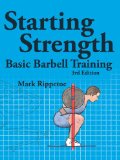Pyramid Training
Pyramid training starts using a light weight and doing many repetitions. The weight increases with each set and the number of repetitions decreases correspondingly.
Different types of Pyramid Training:
Normal Pyramid |
Repetitions |
Strength |
10 Repetitions |
70 % |
6 Repetitions |
85 % |
2 Repetitions |
95 % |
1 Repetitions |
100 % |
There is a relatively high risk of injury when doing the repetition with maximal strength; it is actually used to increase strength rather than to increase muscle mass.
“Truncated” Pyramid |
Repetitions |
Strength |
12 Repetitions |
60 % |
10 Repetitions |
70 % |
8 Repetitions |
80 % |
6 Repetitions |
85 % |
The “truncated” pyramid stimulates the muscle fibres to swell more effectively than the normal pyramids.
Reversed “Truncated” Pyramids |
Repetitions |
Kraft |
6 Repetitions |
85 % |
8 Repetitions |
80 % |
10 Repetitions |
70 % |
12 Repetitions |
60 % |
The training intensity is considerably higher in comparison to the “truncated” pyramid. It is only suitable for advanced athletes who have good training techniques.
Double Pyramid |
Repetitions |
Strength |
12 Repetitions |
60 % |
10 Repetitions |
70 % |
8 Repetitions |
80 % |
6 Repetitions |
85 % |
6 Repetitions |
85 % |
8 Repetitions |
80 % |
10 Repetitions |
70 % |
12 Repetitions |
60 % |
top  |
Pyramid Training: Advantages and Disadvantages
Advantages
- Increase in strength and muscle growth.
Disadvantages
- Pyramid training is very time-consuming because of the constant weight changing.
Who is pyramid training suitable for?
It is ideal for athletes who want to combine the advantages of maximal strength training with set training in other words those who want to combine a maximum build up in strength with muscle growth.
top 

You Are Your Own Gym: The Bible of Bodyweight Exercises, Mark Lauren, Joshua Clark

The New Encyclopedia of Modern Bodybuilding: The Bible of Bodybuilding, Fully Updated and Revised

Starting Strength, 3rd edition,
Mark Rippetoe
|

